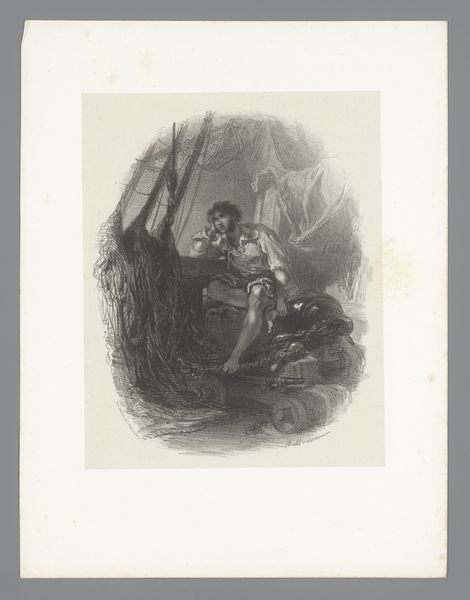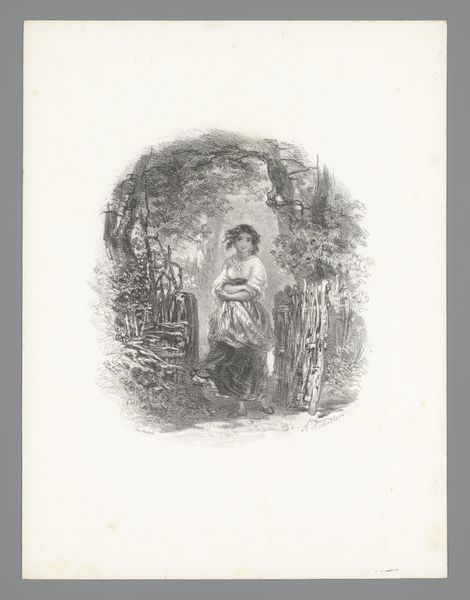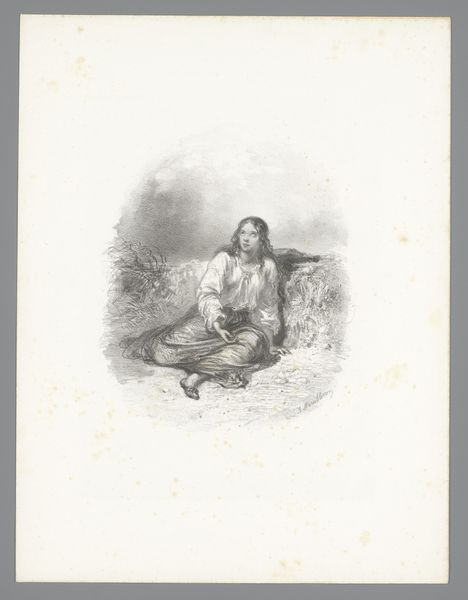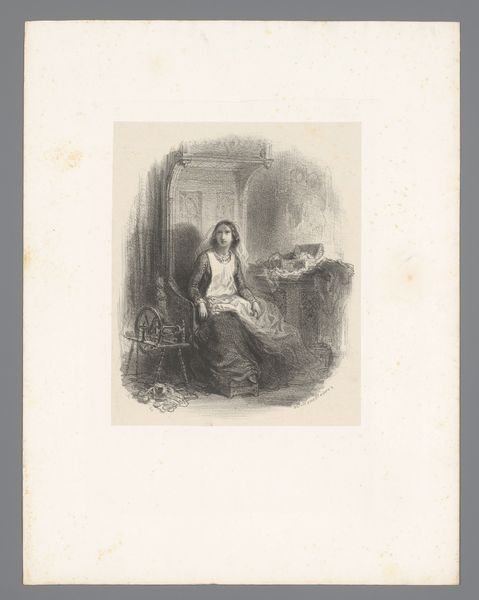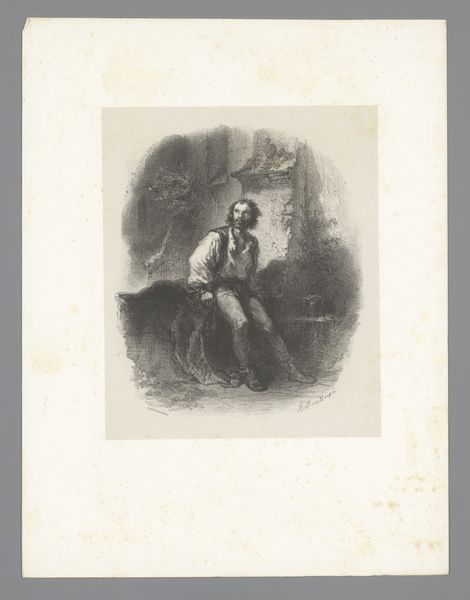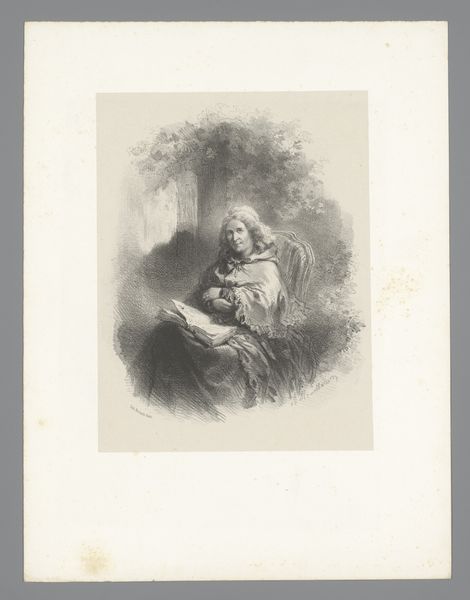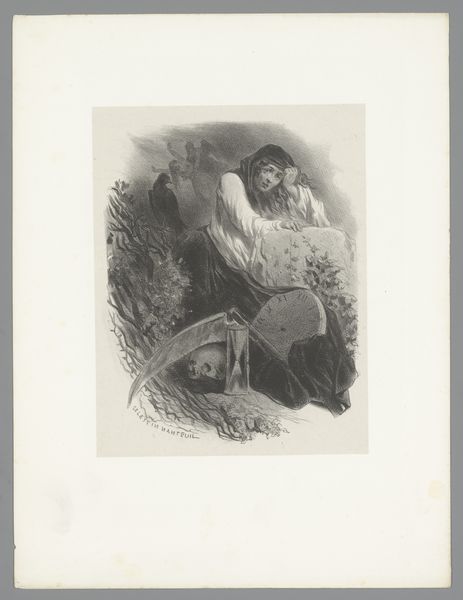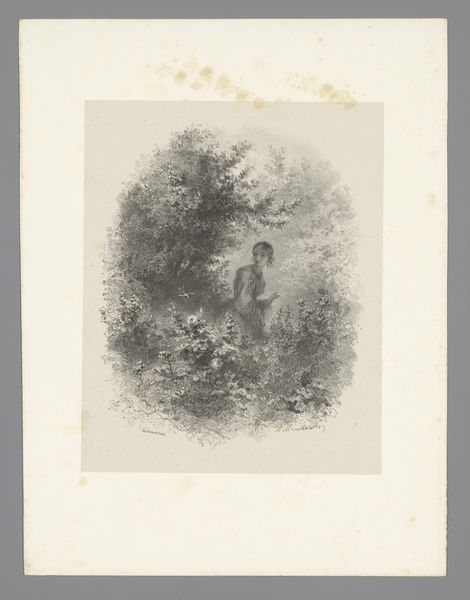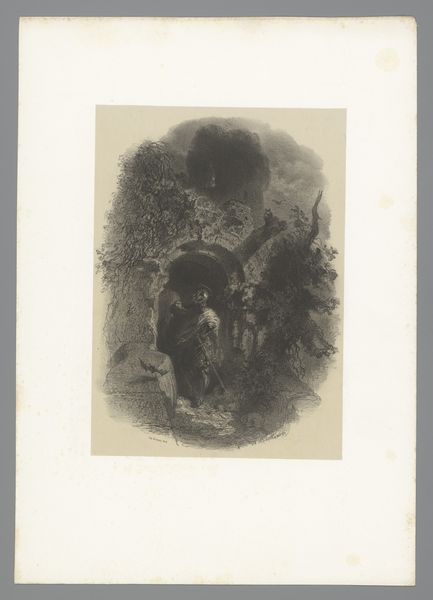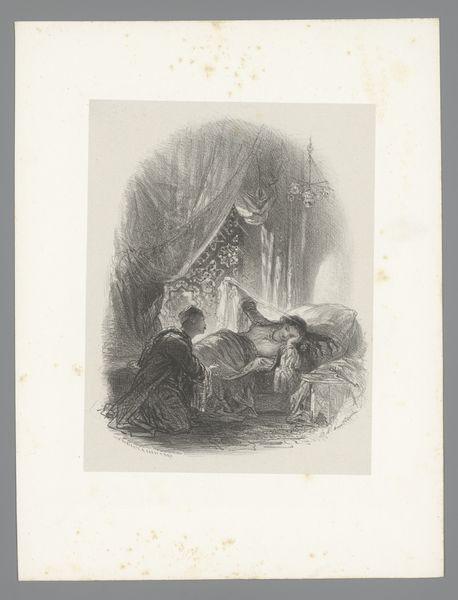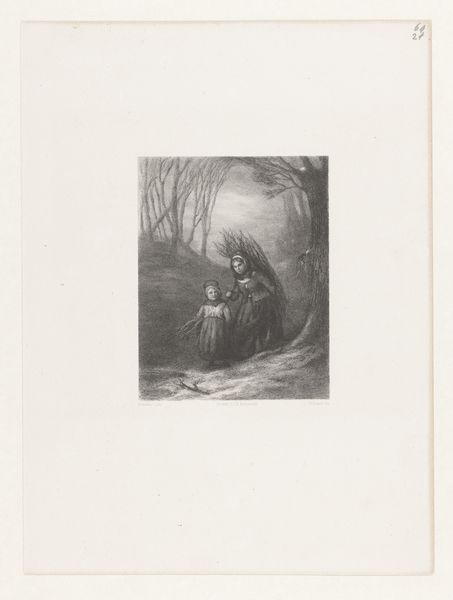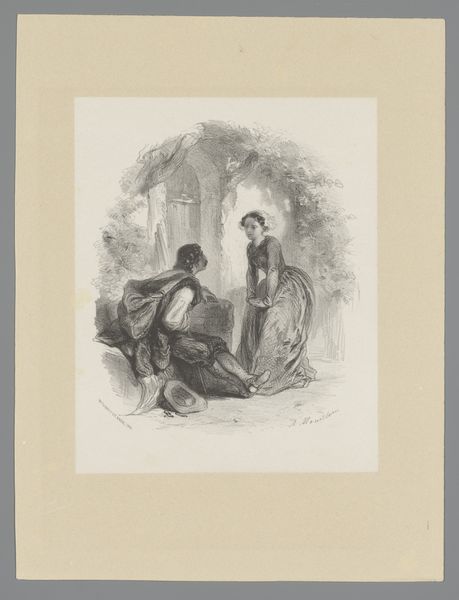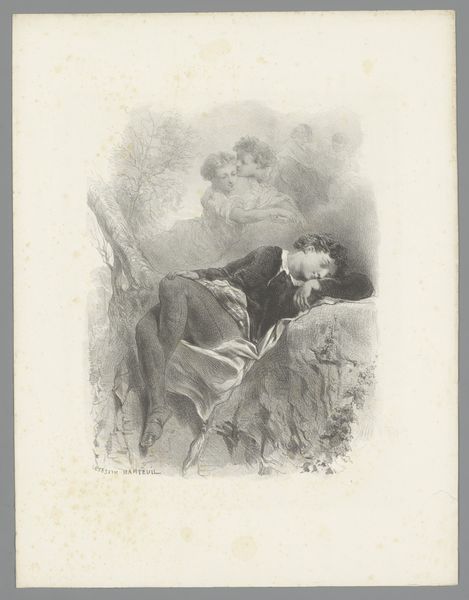
Dimensions: height 359 mm, width 269 mm
Copyright: Rijks Museum: Open Domain
Adolphe Mouilleron created this lithograph, "Young Woman Sitting Against a Thatched House," using ink on paper. The lithographic process is key here. It's a printmaking technique where the artist draws an image on a stone or metal plate with a greasy substance, then applies ink, which adheres only to the greasy areas, allowing the image to be transferred to paper. This was a relatively new technology in the 19th century, making art more accessible to a wider audience. The image itself depicts a young woman in a humble setting, leaning against what appears to be a thatched cottage. The dark, moody tones achieved through lithography give the scene a sense of quiet introspection. Was this artwork a commission from a wealthy patron, or did the artist create it independently and sell it to the masses? How does its materiality influence its meaning and the way it was received by different social classes? By considering the materials and the printing process, we gain a deeper understanding of the social and cultural context in which this work was created.
Comments
No comments
Be the first to comment and join the conversation on the ultimate creative platform.
